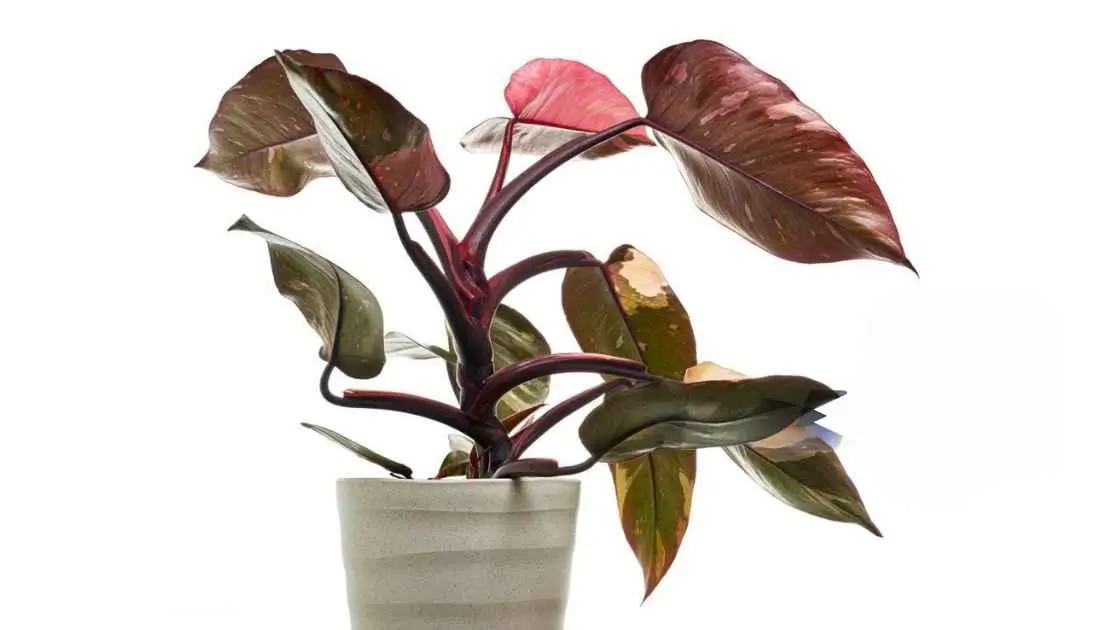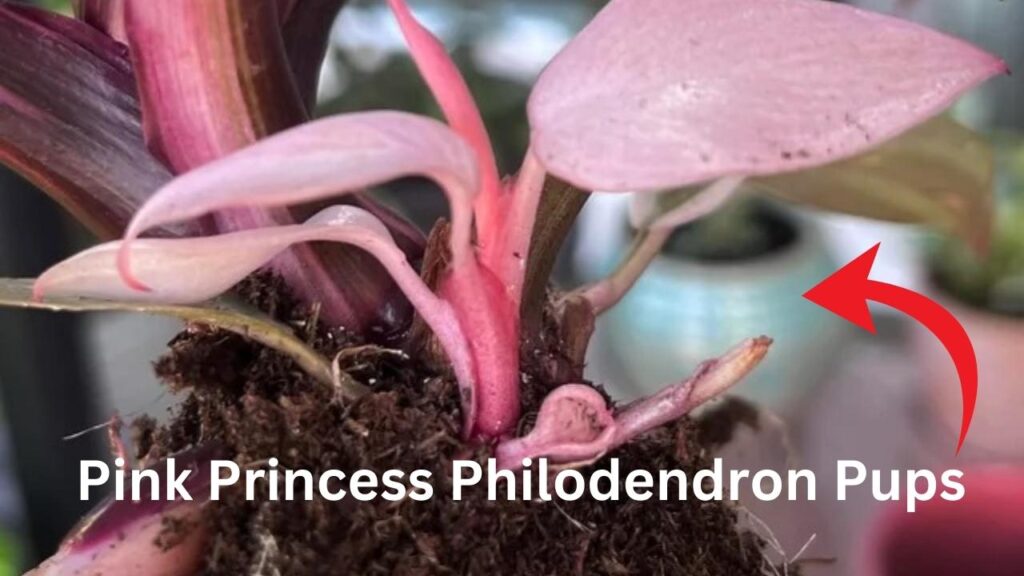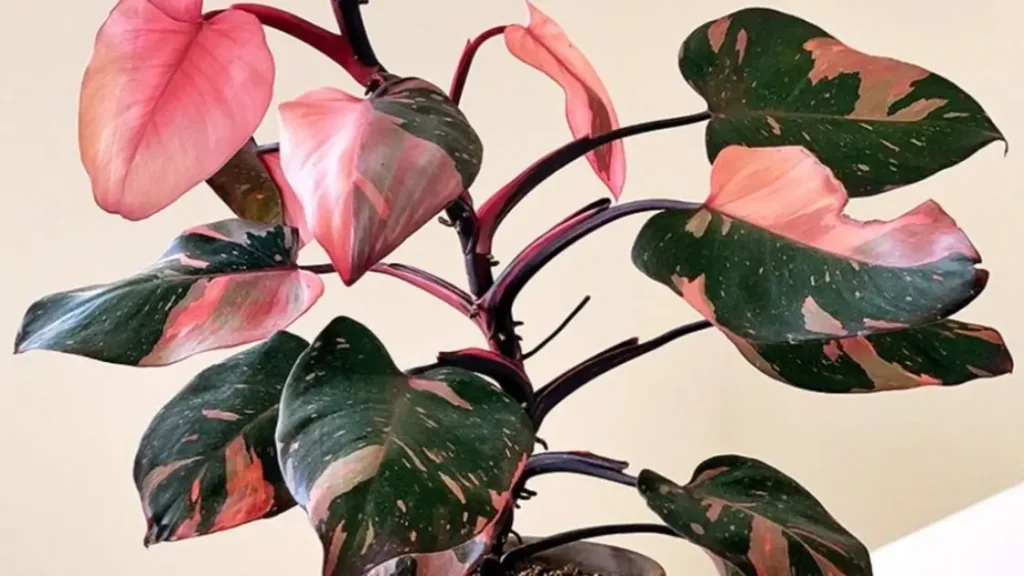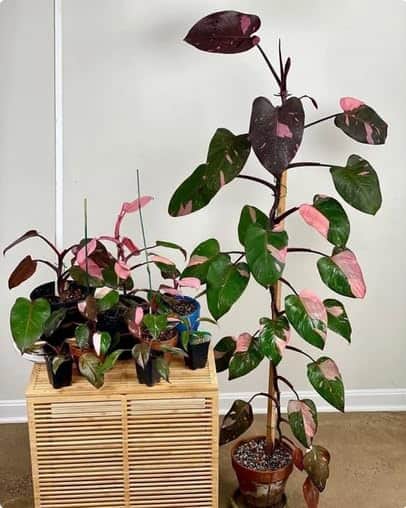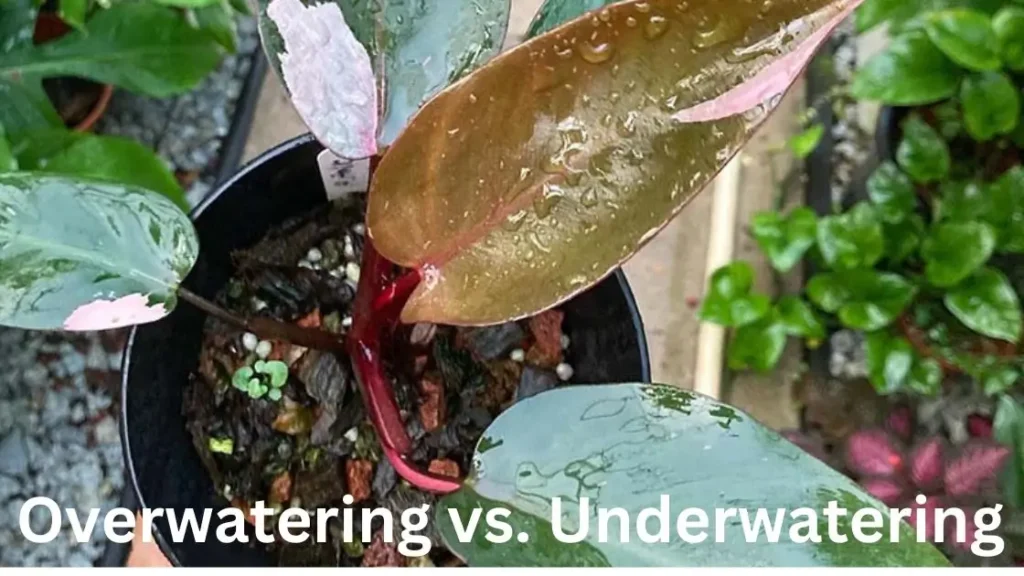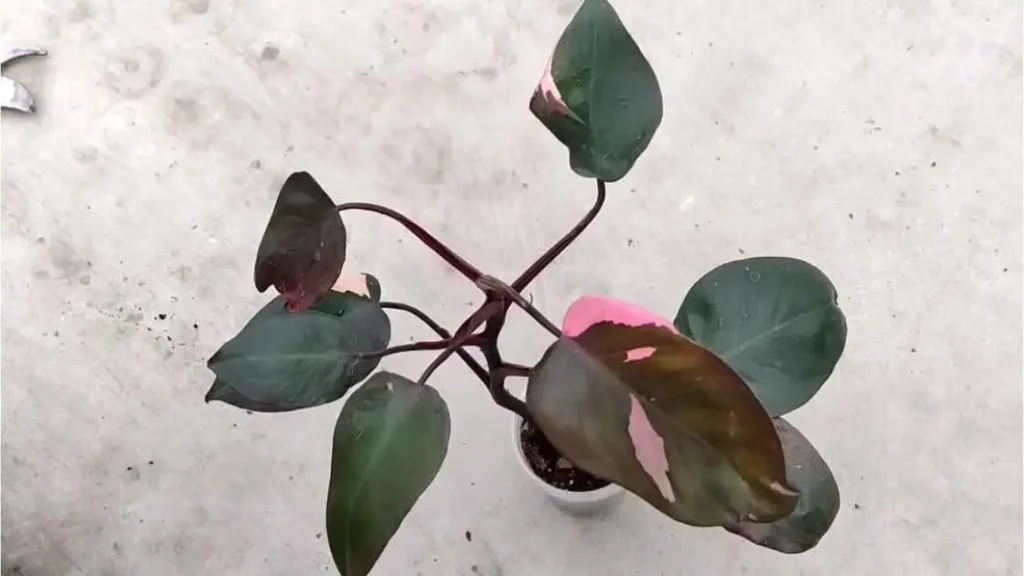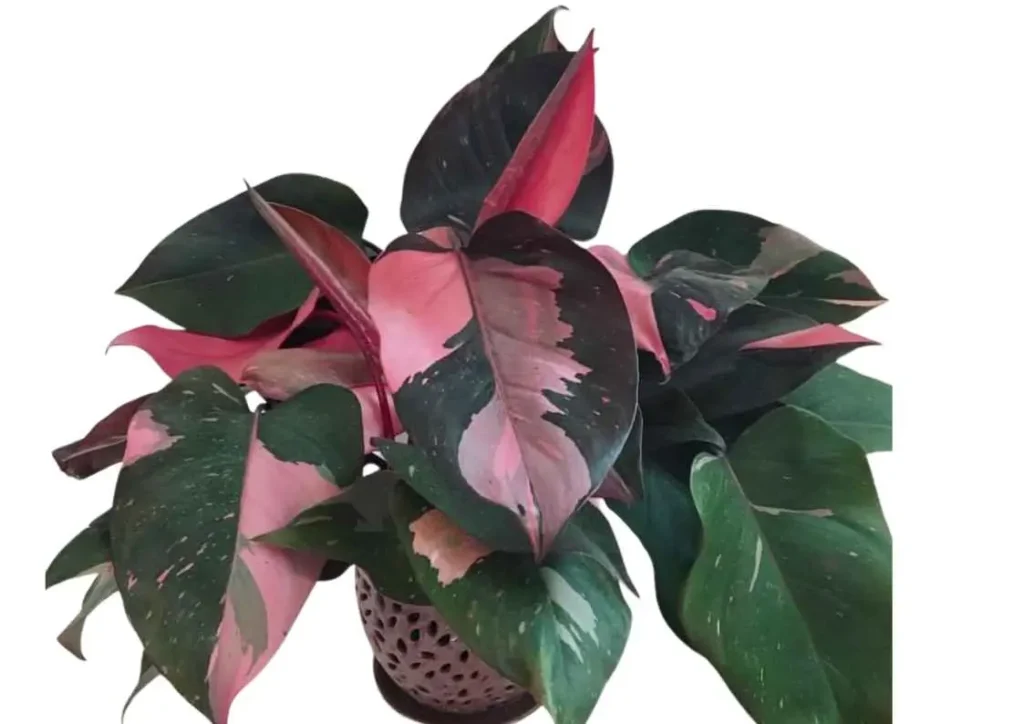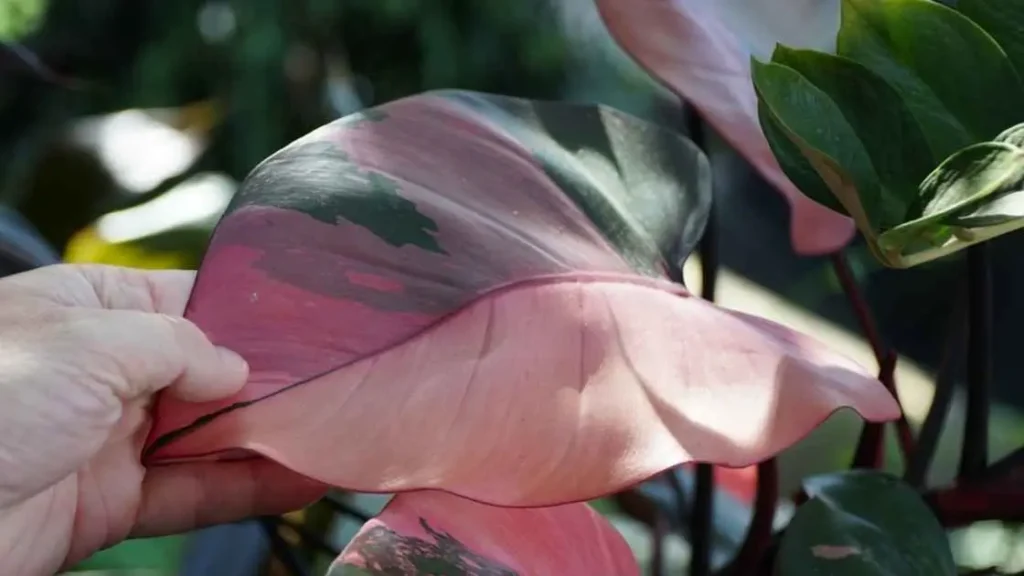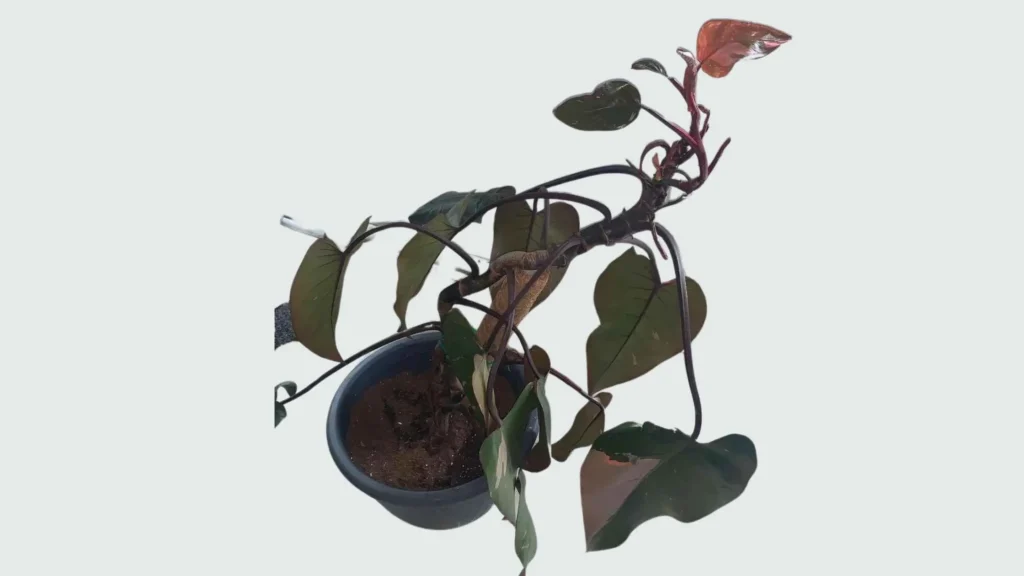Table of Contents
ToggleCaring for a Pink Princess Philodendron is like tending to a relationship. You need to give it the right mix of attention, care, and a good environment to help it grow. When I first got my Pink Princess, I was both excited and nervous. Its bright pink and green leaves were beautiful. But I soon realized that keeping it healthy took more than just putting it on a sunny windowsill and watering it now and then. Over time, I’ve learned how to keep this plant looking great, and I want to share what I’ve learned with you.
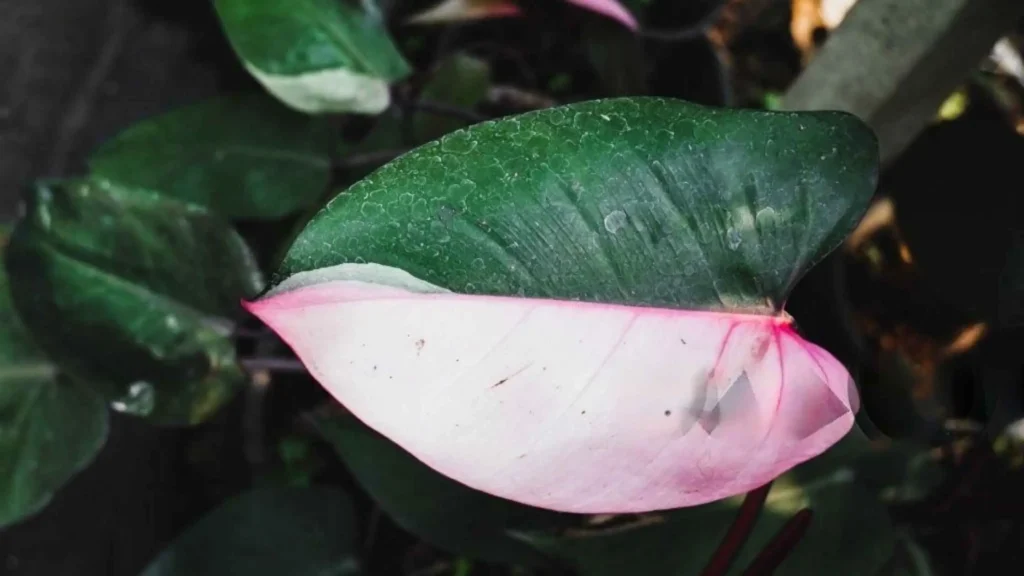
Light Requirements for Pink Princess Philodendron
When I first got my Pink Princess, I thought putting it right in front of a window would help it soak up lots of light. That was a mistake. This plant loves light, but too much direct sunlight can bleach its pink leaves, turning them almost white. The key is to find a spot where it gets plenty of bright, indirect light.
An east-facing window works well. It gets bright morning light, which is softer than the afternoon sun. If you have only a south or west-facing window, try placing your plant a few feet away or use a sheer curtain to soften the light. This will keep the leaves vibrant without burning them.
The pink color you love is due to a lack of chlorophyll, the green pigment that plants use for photosynthesis. If your Pink Princess doesn’t get enough light, it will make more chlorophyll, leading to more green and less pink. To keep the pink color, make sure the plant gets enough light, about 6 hours of bright, indirect light each day. If the pink starts fading, move it to a brighter spot or use a grow light.
I’ve stressed over a few green leaves myself, but with the right light, the pink will come back.
Proper Watering Techniques
Watering a Pink Princess Philodendron can be tricky. I’ve had my share of overwatering mistakes. It’s easy to think more water means a happier plant, but with the Pink Princess, less is better. Overwatering is a common problem and can lead to root rot, which can kill the plant.
The best method I’ve found is to let the top 1-2 inches of soil dry out completely before watering again. For me, this usually means watering once a week during spring and summer. In the fall and winter, when the plant grows slower, I water it less often.
A simple tip is to check the soil by sticking your finger in it. If it feels dry, it’s time to water. When you water, do it thoroughly until water drains out of the bottom of the pot. This ensures the roots get enough water but prevents the soil from staying too wet.
I avoid using tap water because it can contain chemicals like chlorine and fluoride that can harm the plant over time. I prefer distilled water or rainwater. If you must use tap water, let it sit out overnight to let some chemicals evaporate before using it.
READ MORE: How to Water Your Pink Princess Philodendron Properly | A Complete Guide
Best Soil and Potting Mix
Getting the right soil mix for your Pink Princess Philodendron is very important. I learned this the hard way when I first used regular potting soil that held too much moisture, causing root problems. The best soil for a Pink Princess drains well but is also rich in organic matter.
After some trial and error, I found that a mix of one part perlite, one part orchid bark, and one part regular potting soil works great. The perlite helps with drainage, the orchid bark keeps the soil light and airy, and the potting soil provides the nutrients the plant needs. This mix is similar to the plant’s natural environment. It lets the roots breathe while holding just enough moisture to keep the plant healthy.
If you like DIY projects, you can make your own potting mix at home. Just make sure it’s loose and drains well. The last thing you want is for your Pink Princess to sit in wet soil, which can cause root rot.
When potting, I like to use a terracotta pot with drainage holes. Terracotta is porous, which helps pull moisture away from the soil, and the drainage holes prevent water from sitting at the bottom. This setup has helped me avoid overwatering problems and keeps my Pink Princess healthy.
READ MORE: Best Soil Mix for Pink Princess Philodendron | DIY Recipes for Healthy Growth
Maintaining Optimal Humidity and Temperature
Humidity and temperature are key to keeping your Pink Princess Philodendron healthy. This plant loves humid conditions, like those in tropical forests where it naturally grows. In my home, the air gets dry, especially in winter, so I’ve had to find ways to keep the humidity up.
Your Pink Princess does best in 50-60% humidity. If you live in a dry area like I do, try using a humidifier near your plant. Another option is to place the plant on a pebble tray with water. As the water evaporates, it adds humidity around the plant. You can also mist the leaves, but don’t overdo it, too much moisture can cause fungal problems.
READ MORE: Is My Pink Princess Philodendron Getting Enough Humidity? Essential Tips for Optimal Growth
For temperature, keep your Pink Princess between 65°F and 85°F. Avoid placing it near drafts, air vents, or heaters, as sudden temperature changes can stress the plant. I once put mine too close to a window in winter and noticed the leaves turning yellow and drooping. Now, I keep it in a more stable spot, and it’s much happier.
Fertilizing and Feeding Your Plant
Feeding your Pink Princess Philodendron the right nutrients is key to keeping it vibrant and healthy. At first, I wasn’t sure how often to fertilize, but after some research and trial and error, I found a routine that works.
In spring and summer, I feed my Pink Princess once a month with a balanced liquid fertilizer. This helps the plant grow and keeps its leaves bright. I use a 20-20-20 fertilizer, diluted to half strength, to avoid over-fertilizing, which can burn the roots.
In fall and winter, when the plant’s growth slows down, I reduce feeding. If your plant isn’t growing much, it’s best to skip fertilizing during these months. Over-fertilizing in the off-season can cause a buildup of salts in the soil, which can harm the plant.
One important tip: always water your plant before fertilizing. This simple step helps prevent the fertilizer from burning the roots and keeps your Pink Princess healthy.
Pruning and Repotting Techniques
Pruning and repotting are important for caring for a Pink Princess Philodendron, but they can feel a bit intimidating if you’re new to plant care. I remember being nervous the first time I had to prune mine, worrying about cutting too much or hurting the plant. But with some practice, I found that pruning is simple and helps the plant.
Pruning keeps the plant bushy and encourages new growth. If your Pink Princess starts to look leggy, with long stems and few leaves, it’s time for a trim. I usually prune mine in the spring or summer when it’s growing actively. Using sharp, clean pruners, I cut just above a node (where a leaf connects to the stem). This helps the plant branch out and grow more leaves, making it look fuller.
I repot the plant every 1-2 years, or when I see roots growing out of the drainage holes. Repotting gives the plant fresh soil and more room to grow. I choose a pot that’s just one size larger than the current one. A pot that’s too big can hold too much water, leading to overwatering problems.
The process is simple: I carefully take the plant out of its pot, loosen the roots, and place it in a new pot with fresh soil. After repotting, I water the plant well and let it adjust to its new pot. I’ve found that repotting in the spring works best because the plant is stronger and adapts quickly to the change.
Common Problems and Solutions
Even with the best care, you might face some problems with your Pink Princess Philodendron. I’ve dealt with yellowing leaves, pests, and even root rot. But don’t worry—most issues can be fixed if you catch them early.
Yellowing Leaves
Yellowing leaves are a common problem. When I first saw this on my plant, I panicked, thinking I had done something wrong. But I learned that yellow leaves can come from a few things. The most common cause is overwatering. If the soil stays wet too long, the roots can’t breathe, leading to root rot, which shows up as yellow leaves. Check your watering routine and make sure the soil drains well.
Another cause could be cold temperatures. Pink Princess Philodendrons don’t like the cold, so keep your plant in a spot where it stays above 65°F. If only the lower leaves are yellowing, it might just be natural aging. Old leaves will die off as new ones grow.
READ MORE: Why Your Pink Princess Philodendron Leaves Turn Yellow | Causes and Expert Solutions
Pests
Pests can also be a problem for your Pink Princess. I once had a spider mite infestation, and it was tough. These tiny pests can cause a lot of damage if you don’t catch them early. Regularly check your plant for pests like spider mites, aphids, or mealybugs. They often hide under leaves or in small crevices, so look carefully.
If you find pests, I recommend using neem oil. It’s a natural pesticide that’s safe for indoor use. You can also use rubbing alcohol on a cotton swab to remove pests by hand. It’s a bit tedious, but it works.
Variegation Loss
You might also see your plant losing its pink color, with the leaves turning more green. This usually happens when the plant isn’t getting enough light. Moving it to a brighter spot can help bring back its beautiful color. If the pink doesn’t return, you can prune back to the last variegated leaf to encourage new growth.
READ MORE: Why is My Pink Princess Philodendron Losing Variegation? Causes and Solutions
Leaf Curling
Leaf curling is another issue I’ve faced. It can happen due to inconsistent watering, low humidity, or too much direct sunlight. If you notice curling, check your watering routine, increase the humidity around the plant, and make sure it’s not in direct sunlight.
READ MORE: Why Are My Pink Princess Leaves Curling? Top Causes and Effective Solutions
Propagation Methods for Pink Princess Philodendron
One of the best parts of growing a Pink Princess Philodendron is propagating it. I’ve had great success with this, and it’s a fun way to share the plant with friends or grow your own collection.
The most common way to propagate is by taking stem cuttings. I usually do this in the spring or summer when the plant is growing. To start, I choose a healthy stem with at least three nodes, these are the points where leaves and roots grow. Using sharp, clean scissors, I make a cut just below the third node.
Next, I remove the leaves from the lower nodes, leaving only the top two or three leaves. This helps the cutting focus on growing roots instead of supporting too many leaves.
You can root the cutting in water or soil. I prefer water because it’s easier to see the roots growing. Just place the cutting in a glass of water, making sure the lower nodes are under the water. Change the water every few days to keep it fresh. In about two to four weeks, you should see roots starting to form.
Once the roots are about an inch long, I move the cutting to a pot with well-draining soil. Water it lightly and keep it in a warm, bright spot. In a few weeks, you’ll see new growth, and soon you’ll have a new Pink Princess to care for.
If you prefer, you can also root the cutting directly in soil. Dip the cut end in rooting hormone and plant it in a small pot with moist soil. Keep it in a warm, bright spot, and in a few weeks, it should start to grow roots.
Conclusion
Caring for a Pink Princess Philodendron is very rewarding. This plant’s unique colors and easy care make it a favorite for many plant lovers. By following the tips I’ve shared, about light, watering, soil, and problem-solving, you can keep your Pink Princess healthy and bright. It’s all about finding the right balance and paying attention to what your plant needs. With good care, your Pink Princess will thrive and be a beautiful part of your home.
If you’re ever unsure about how to care for your plant, feel free to revisit this guide. Your Pink Princess is a living, growing companion that will reward you with beauty as long as you care for it properly. Happy growing!
FAQs
Does the Pink Princess Philodendron stay pink?
Yes, with the right care, your Pink Princess Philodendron can keep its pink color. The key is to provide plenty of bright, indirect light. If the plant doesn’t get enough light, it will produce more green leaves and less pink.
What is the best way to water my Pink Princess Philodendron?
Water your Pink Princess when the top 1-2 inches of soil are dry. Water thoroughly until it drains out of the bottom. Make sure the plant doesn’t sit in water, as this can cause root rot.
How often should I repot my Pink Princess Philodendron?
Repot your Pink Princess every 1-2 years or when you see roots growing out of the drainage holes. Spring is the best time to repot, as the plant is actively growing and can adjust quickly.
Is the Pink Princess Philodendron toxic to pets?
Yes, the Pink Princess Philodendron is toxic to pets. It contains crystals that can cause irritation if eaten. Keep the plant out of reach of pets to prevent any accidents.
Why are my Pink Princess Philodendron leaves turning yellow?
Yellow leaves can be due to overwatering, low temperatures, or natural aging. Check your watering routine and make sure the plant is in a warm, stable place. If only the lower leaves are yellowing, it may just be a natural part of the plant’s growth.
Related
Discover more from Pink Philodendron
Subscribe to get the latest posts sent to your email.

